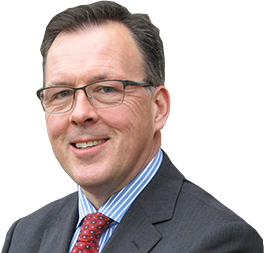search
date/time
 | Lancashire Times A Voice of the Free Press |

Andrew Palmer
Group Editor
4:00 AM 24th June 2021
frontpage
Lockdown Lifting Could Spark Rise In Drink-driving Cases

Image by Steve Buissinne from Pixabay
The number of people caught drink-driving by UK police forces peaked during last summer, with more than 32,000 reports made between the months of June and August, accounting for 31% of the total offences for last year. That’s according to new Freedom of Information data obtained by Confused.com, which showed that the number of offences dropped to 4,000 in April and more than doubled to 9,492 in May, before peaking at more than 11,000 in June. This coincides with the easing of restrictions, including allowing social visits and pubs reopening over the course of the summer.
June was in fact the most prolific month for drink-driving throughout the year, with 366 offences recorded per day, on average. In total, 11,025 drivers were caught during the month. This is followed by a staggering 10,850 reports in July, and 10,524 in August. In total, 104,858 drink-driving offences were reported by police forces throughout the year – a slight 2% drop compared to 2019.
Now, as the UK prepares to leave lockdown behind in the coming months, the number of people taking to the road after a drink could reach dangerous levels. Further research by Confused.com finds almost two in five (39%) UK drivers have plans to celebrate when restrictions ease, which could involve a lot of celebratory drinks. In fact, more than a quarter (28%) of drivers shared concerns that drink-driving cases will increase once lockdown is lifted, and a further one in four (26%) thinks being in lockdown for so long will encourage people to drink more. Although, while taking the opportunity to celebrate may seem like the obvious reason for drinking and driving, the research finds that some people are still cautious of COVID-19. According to the research, more than one in four (27%) drivers claim they don’t feel comfortable using public transport or taxis because of the virus.
However, drink-driving has been an issue on UK roads long before people were taking the opportunity to celebrate their freedom. Not only were there 314 offences reported per day pre-lockdown, on average (March 2019-2020), but almost half (47%) of the UK driving population admit to driving after having a drink in the past. Of these, only one in 10 (9%) have been caught, with most (81%) being pulled over after driving home.
And while some may think a good night’s sleep might help to sober them up, this is in fact far from the truth. More than half (52%) of those who have been caught drink-driving claim the incident happened the morning after a night of drinking. Similarly, one in five (21%) motorists admit to driving when they have been over the limit, with a whopping 86% of these respondents claiming to have driven the morning after drinking, with almost half (47%) assuming the alcohol had worn off. Worryingly, a third (33%) claimed to have still felt quite drunk.
Also by Andrew Palmer...
Classical Music: Brahms & BusoniClassical Music: Chopin Obsession By Marina ArsenijevicClassical Music: Tchaikovsky & Korngold String SextetsClassical Music: Gabríel ÓlafsThe Value Of Luck: In Conversation With Martin VenningAlthough, there is no excuse for driving drunk – something which can have very significant consequences. And it seems from the research that many people are knowingly taking the gamble. Of those who have knowingly driven drunk, more than a third (36%) claim to have done so because they didn’t have any other way of getting home. A further one in three (34%) took the risk because they didn’t have far to drive. And perhaps more concerningly, almost a third (31%) claim they were ‘only slightly over the limit’ and had enough control of the car.
It’s no surprise that so many drivers have driven while over the limit, given that more than one in four (26%) believe they would be safe to drive after two or more drinks. Although, typically, the average UK driver will have one drink and drive. At the same time, almost one in three (30%) are confused as to why people think it’s acceptable to drink and drive at all.
But there is certainly a level of concern among drivers that lockdown coming to an end could put road users at risk. That doesn’t mean to say that people can’t enjoy their freedom but they should also be mindful of planning their way home before heading down to the pub, and not taking the risk.
Alex Kindred, car insurance expert at Confused.com, comments: “The end of lockdown is so close, and we can already smell the freedom with pubs and bars reopening over the past few weeks. But we know from our research and data from UK police forces that easing of lockdown restrictions does lead to a surge in drink driving cases.
“We need to enjoy ourselves this summer, it’s been a long time coming! But when it comes to getting home, it’s quite simple: if you’re drinking, don’t drive. If you’re driving, don’t drink. And this applies to that hangover you wake up to. If you feel rough, the chances are you aren’t safe to drive. We don’t want you to get caught out or to put yourselves and other road users at risk. Our morning after calculator should give you an indication of when you could be safe to drive.”